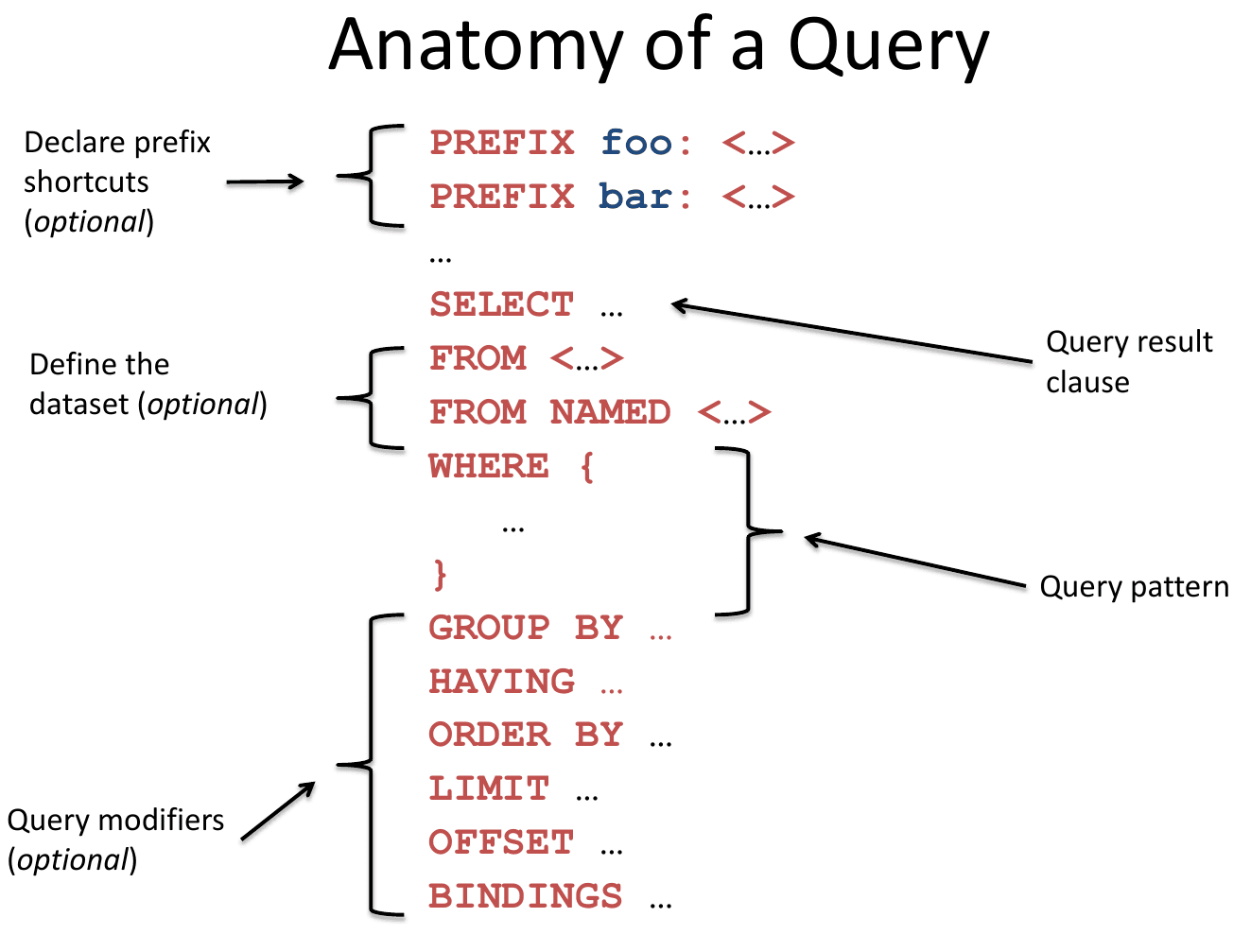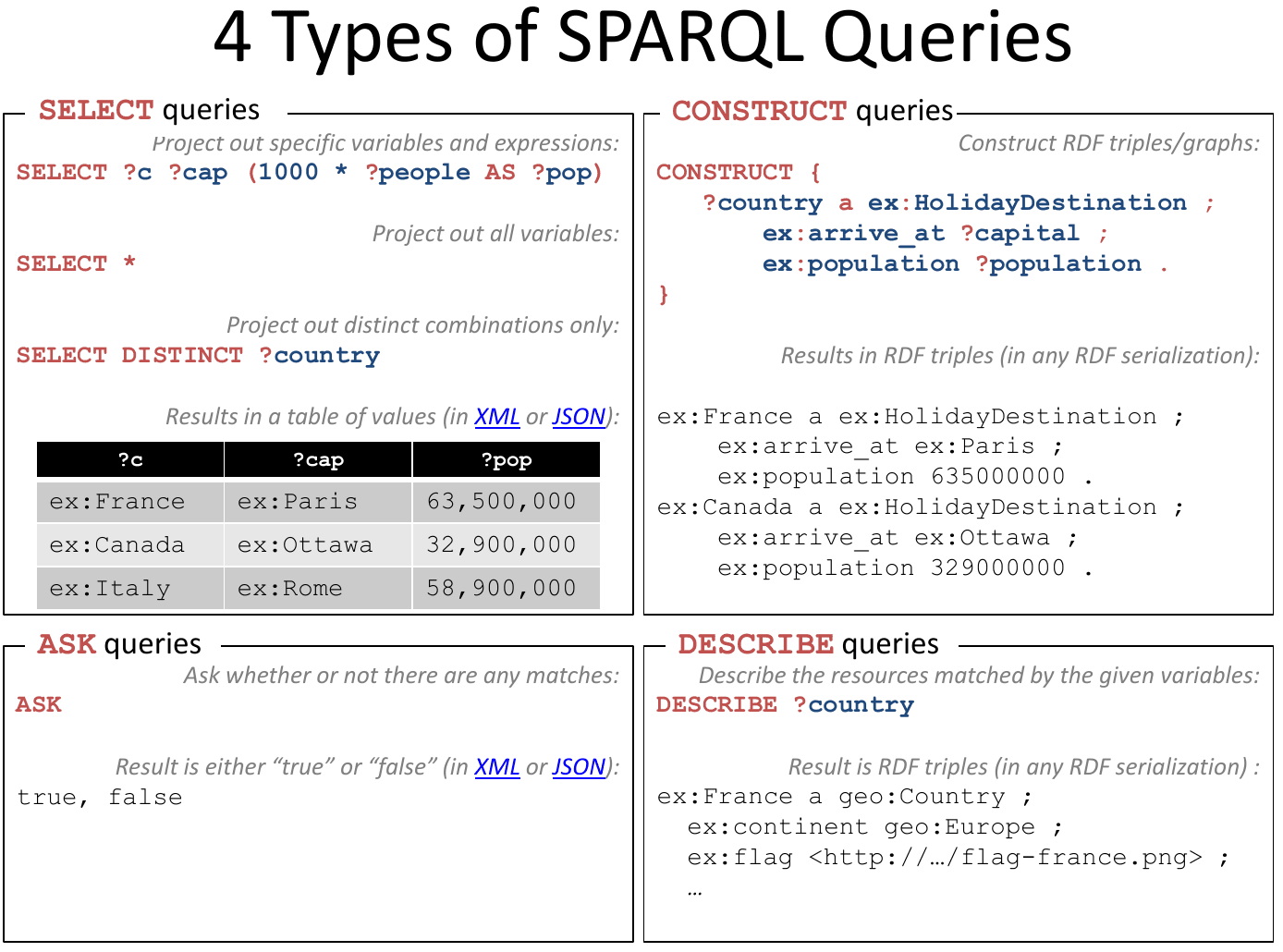Prosopographic Modelling - Introduction
- Written by
- Matej Ďurčo
- Published on
- June 10, 2021
- Tagged with
- Prosopographic data and Semantic web
Prosopographical data in the semantic web
In the following we introduce the basic terminology in relation to data modelling and semantic web.
Main concepts
Ontology
- In the context of Digital Humanities, an Ontology is mostly defined as “a formal, explicit specification of a shared conceptualization.” (Studer et al, 1998)
- An ontology is an explicit model of concepts, which are defined with clear semantics.
- It is important that users of an ontology understand the underlying assumptions about the chosen domain.
- Normally an ontology is expressed as a set of classes and properties representing concepts and their relationships.
RDF - Resource Description Framework
-
abstract data model to state anything about anything by anybody
-
URIs to identify entities
-
triples:
<subject predicate object>to form a graph -
named graphs: allows to assign a fourth identifier to a group of triples (quad mode) and use that to further describe the “named graph”.
@prefix cidoc: <http://www.cidoc-crm.org/cidoc-crm/> . @prefix dct: <http://purl.org/dc/terms/> . @prefix ns1: <https://omnipot.acdh.oeaw.ac.at/> . @prefix rdfs: <http://www.w3.org/2000/01/rdf-schema#> . @prefix void: <http://rdfs.org/ns/void#> . ns1:provenance { <https://viecpro.acdh-dev.oeaw.ac.at/entities#> a void:Dataset ; dct:created "2021-06-02"^^xsd:date ; dct:creator "Matthias Schlögl, Peter Andorfer"@de ;} <https://viecpro.acdh-dev.oeaw.ac.at/entities#> { <https://viecpro.acdh.oeaw.ac.at/entity/100008/death> a cidoc:E69_Death ; rdfs:label "Death of Wolf Pickl"@de ; }
OWL - Web Ontology Language
- https://www.w3.org/OWL/ (2012)
- W3C-specification on how to formalize ontological information
SKOS - Simple Knowledge Organisation System
- https://www.w3.org/TR/skos-reference/ (2009)
- schema for modelling controlled vocabularies (such as taxonomies, thesauri, etc.) in a way that is compliant to Linked Open Data.
- is based on concepts (terms) which can be supplemented with labels, notes, comments, etc.
- SKOS concepts can be linked to each other using hierarchical or associative relations
- can also be linked to other vocabularies
SPARQL- SPARQL Protocol And RDF Query Language
- https://www.w3.org/TR/rdf-sparql-query/ (2008)
- query language for RDF
LOD - Linked Open Data
-
https://www.w3.org/wiki/LinkedData, https://www.w3.org/DesignIssues/LinkedData
-
”set of best practices for publishing structured data on the Web”
Use URIs as names for things Use HTTP URIs so that people can look up those names. When someone looks up a URI, provide useful information. Include links to other URIs. so that they can discover more things.
LOD-cloud
Description of sample datasets
See the presentation slides.
VieCPro
- Project: The Viennese Court – A Prosopographical Portal (ÖAW Innovationsfond 2020 - 2022)
- Data model: Event-based, basic entities + typed temporalized relations between them
- currently 12905 Persons, 1398 Types, 376 Persons
NAMPI
- Project: Nuns and Monks - Prosopographical Interfaces (ÖAW go!digital Next Generation 2019-2021)
- https://nampi.icar-us.eu/
- https://github.com/nam-pi
- Data model: Factoid-based (Document Interpretation Act => Aspects)
- currently 465 Persons, 429 Religious titles, 1692 Document Interpretation acts
Tooling
TripleStore
- database for RDF
- graph as underlying data model
SPARQL
- https://www.w3.org/TR/rdf-sparql-query/
- query language for RDF
APIS
- framework for managing and publishing prosopographical data
- implemented in Python with Postgresql DB as persistence layer
- RDF-serialisation exposed via API
NAMPI
- https://nampi.icar-us.eu/, https://data.nampi.icar-us.eu/
- prosopographical database system based on RDF and the factoid model
- Java-Application as backend + client accessing data via API, data stored in Apache Jena Fuseki Triplestore
ResearchSpace - https://www.researchspace.org/
- semantic knowledge platform
- Java application with predefined frontend-components and a flexible templating mechanism operating directly on SPARQL endpoint to retrieve and present data
SPARQL basics
- Query language for the semantic web
- since 2008 W3C recommendation
- since 2013 SPARQL 1.1 W3C recommendation
The anatomy of a SPARQL query
Following illustration describes the different parts of a SPARQL query.

- Prefixes: optional, used to shorten URIs if they make query difficult to read if spelled out in full. Use prefix in query
- Define dataset: optionally restrict the graph from which to select
- Query result clause: which variables should be returned in the result
- Query pattern: formulate filtering conditions
- Query modifiers: modify and specify your query further (eg. group results by a particular variable, limit query, etc.)
- Variables are freely chosen names prefixed by
?
Four types of SPARQL queries
- SELECT : returns values based on some query pattern
- CONSTRUCT : creates a new graph consisting of new triples
- ASK : returns a yes/no answer, e.g. do any entities with given property exist
- DESCRIBE : provides information about a resource, without explicitly stating the query pattern. The query processor determines the result set.

Recommended reading
-
Addlesee, Angus. “Creating Linked Data”. Medium, 23. April 2019.
-
”Tackling Big Data Challenges with Linked Data”. Medium, 29. Dezember 2018.
-
Glimm, Birte. “Semantic Web Grundlagen - Einführung in RDF”, 2011, 20.
Video resources: